– Increased participation in new energy vehicles due to carbon peak/neutral policy –
– New trend: electric vehicle, smartization, customized for each consumer –
Exhibition Overview

China is the world's largest automobile production and sales market, and it is also the market where you can quickly understand trends in the global automobile market. The Guangzhou International Motor Show, which has been held since 2003, is one of the three major motor shows in China along with the Beijing and Shanghai Motor Shows. The exhibition scale was 3 square meters and the number of vehicles on display reached 19, of which 28 new cars and 22 concept cars were included. For ten days, the number of visitors was 1,020, an increase of more than 54 from the previous year, which shows how much interest Chinese consumers have in automobiles.
This exhibition was evaluated as a stage to show how the trend of electric vehicles and smartization is developing under the theme of “new science and technology, new life (新科技新生活)”. Hall 10.2 was composed of “Future Automobile Science and Technology Pavilion” and showed how AI, autonomous driving, 5G technology, etc. are utilized. It also provided an opportunity to see
< Exhibition area map >
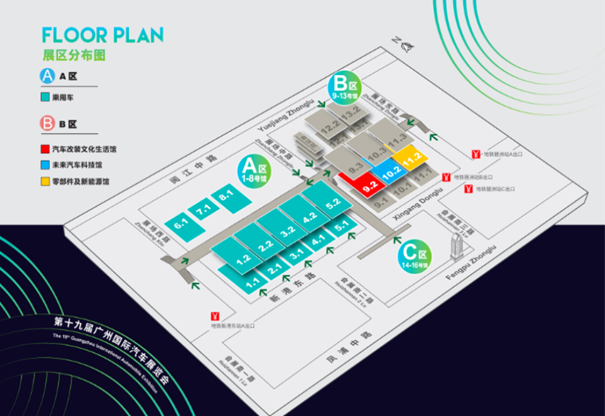
on-site details
As the development of new energy vehicles is accelerating, each major brand actively introduced new energy vehicles at this motor show. According to the organizer's official announcement, 142 new energy vehicles were exhibited at the previous year's motor show, but this year, 241 new energy vehicles accounted for about 24% of the total exhibited vehicles, with 153 Chinese brands. Well-known brands such as Changcheng (长城), Jili (吉利), Guangqi Aion (广汽埃安), and BYD introduced their newly developed high-end new energy vehicles for the first time. A number of up-and-coming brands such as 小鹏, Xpeng) and Li Xiang Auto (理想, Li Auto) also participated.
Among them, the Panzer Dragon of Salon Motors, a brand of Changcheng, attracted the attention of visitors in that it was equipped with four laser radars, and Lantu Automobile of Dongfeng Group (岚图汽车) Lantumonsanga (岚图梦想家), developed by . The Lantumont Shopping Mall is expected to be released next year and will be priced in the range of 4 to 30 yuan, the booth manager said.
< Salon Car Armored Dragon (left), Lantumonsanga (right) >
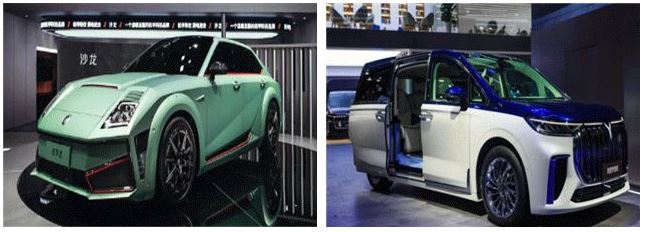
With the rapid development of the new energy vehicle market in China over the past two years, it has been shown that Chinese-foreign joint ventures or foreign car brands that are at the forefront of the internal combustion vehicle field are also entering the new energy vehicle field and developing new vehicles. In particular, Gwangchi Toyota, which participated in this exhibition, announced that it will unveil its first pure electric vehicle, the bZ2X, with a new BEV platform, and Gwangchi Honda, the first pure electric vehicle, e:NP4, to be officially sold in 1.
In addition, luxury brands such as Benz, BMW, and Audi also unveiled pure electric vehicles. Benz unveiled two units such as EQA and EQB, BMW released two units such as i2 and iX, and Audi unveiled the Q4 e-tron. As foreign brands actively develop new energy vehicles, market competition is expected to intensify.
< bZ4X (left), e:NP1 (right) >
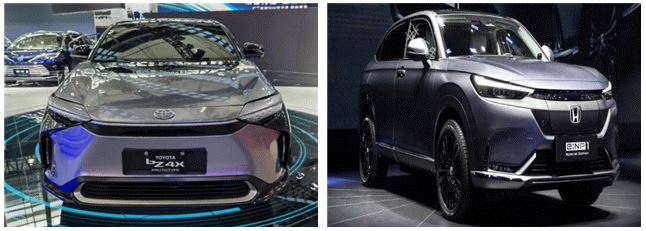
In addition, the Future Automobile Science and Technology Pavilion was organized separately at this motor show to focus on automobile-related AI, autonomous driving, and 5G. Sharing car platform Luqi Chuxing (如祺出行, On Time) unveiled Robotaxi, a self-driving autonomous vehicle, and provided visitors with an opportunity to test drive it.
< Lucci Chuxing (On Time) self-driving car test drive >
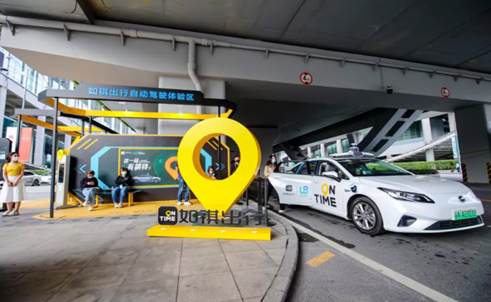
Korean Automobile
Beijing Hyundai and Hyundai Motor Company participated in Exhibition Hall A, Area 5.1. It showed new cars and technologies with various strengths such as high performance, new energy, hydrogen fuel, and smart driving. In particular, in the carbon-neutral exhibition area, the Trailer Drone, a fully autonomous smart hydrogen car, and the hydrogen car Nexo to target the Chinese market were exhibited. In addition, Hyundai Group's hydrogen fuel cell system brand production and sales base "HTWO Guangzhou" was also presented at the site.
< Trailer Drone (left), hydrogen car Nexo (right) >
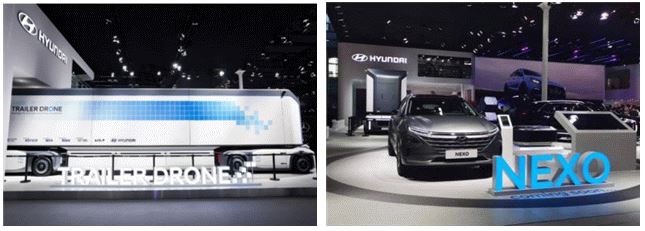
Kia Motors also unveiled a number of new cars at the Guangzhou Motor Show. In addition to the Kia EV6 GT-line, which was first unveiled at the previous Shanghai Motor Show, the Kia EV6 was first unveiled in China at the Guangzhou Auto Show. In addition, major models such as the 4th generation Carnival and Kia Zipao Ace, K5, KX3, and K3 EV were also exhibited. In addition, the general manager of Dongfeng Yueda Kia (东风悦达起亚) also revealed a plan to actively target the Chinese market by introducing new electric vehicles every year in accordance with the new energy vehicle trend.
< EV6 (left) EV6 GT-line (right) >
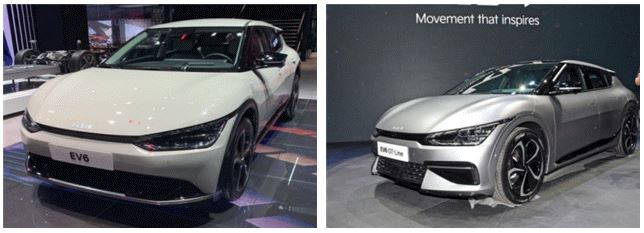
new trend
The first trend is smartization and luxury. At this motor show, many parts for smartization such as L2 or higher driving assistance system, smart cockpit, laser radar, hash rate chipset, and AR HUD were exhibited, and it was found that these parts are becoming common. In particular, the Gwangchi Aion LX Plus introduced by Gwangchi emphasized the fact that it can travel for 1,000 km by applying battery technology equipped with a silicon anode material, and it is equipped with 2 second-generation smart laser radars, which greatly improves the L3 auxiliary operation function.
※ (Reference) The autonomous driving class is divided into levels 0 to 5
Stage 0: Stage without autonomous driving function
Step 1: Automatic brake, automatic speed control possible
Stage 2: Partially autonomous driving is possible, but a stage close to driving assistance in which the driver must always supervise the driving situation
Step 3: The vehicle controls the safety function on its own, but transfers the control right to the occupant when the system is difficult to make its own decision
Step 4: Self-driving is possible, and no passenger control is required (passenger can control it if necessary)
Step 5: Unmanned driving without occupants
In addition, some companies have introduced internal combustion locomotives equipped with smart systems in response to the demand for smartization by automobile consumers. Beijing Automobile (北京汽车) also unveiled the Mofang (魔方), a semi-medium-sized gasoline SUV equipped with the Harmony OS (鸿蒙OS) control system, a Huawei smart cockpit, jointly with Huawei. In addition, a number of IT companies such as 360, iFlytech, and Banmazuxing, which have entered the smart car field, are developing various vehicle systems such as smart driving, operation system, voice recognition, remote control, chip, and laser radar. The product showed the development of the current smart car.
< Gwangchi Aion LX PLUS (left), Beichi SUV魔方 (right) >
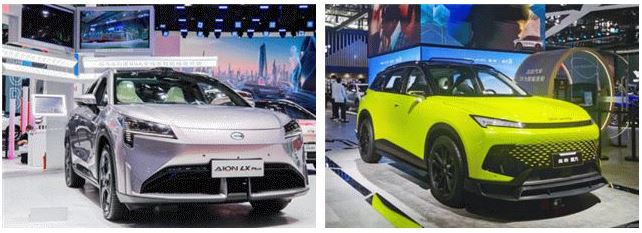
The second trend is that consumers tend to regard cars as consumer goods. From 2020, there is a tendency to produce customized models to meet the needs of consumers according to the change in the perception of the main consumer group regarding automobiles as consumer goods. In particular, as female consumers gradually became more interested in automobiles, Changcheng Group's Ora brand launched a model mainly targeting female customers. According to a statistic, the cumulative sales of Ora brand cars from January to May 2021 reached 1 units, a 5% increase compared to the same period last year. At this motor show, Ora introduced a 'Balletcat' car, which attracted the attention of many female visitors with its retro interior and exterior design. In addition, not a few automobile brands have developed and promoted individualized models to appeal to the younger generation.
In line with this trend, experts predicted that it will be as important as reducing automobile production costs for automobile manufacturers to establish a strategy to identify customer needs and develop customized vehicle models, rather than simply producing and selling them.
< Ora valet cat vehicle >
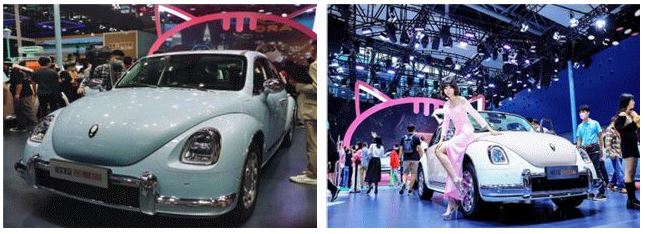
View
According to the China Automobile Manufacturers Association, the cumulative production and sales of new energy vehicles from 1st to October this year recorded 256.6 and 254.2 million units, respectively, and the total annual sales volume increased by more than 130% compared to the previous year to exceed 300 million, a record high. to be.
Although more than 70% of the cars that participated in the motor show were still internal combustion engine vehicles, the spotlight was focused on new energy vehicles. Industry insiders evaluated that this is reflected in the exhibition that the center of the market and growth engine are shifting to new energy vehicles.
Guangzhou City announced a policy to increase the annual target increase of new energy compact cars from 24,000 units to 8 units, and Shenzhen City lowered entry barriers by loosening new energy compact car purchase and license plate application conditions. In addition, regions such as Fujian and Jilin are also encouraging the purchase of new energy vehicles through support policies, so the market is expected to expand more rapidly in the future.
During an on-site interview with industry experts, he predicted that China's new energy vehicles will become more competitive by developing rapidly in both quality and technology, and that competition between their own brands and foreign brands will become increasingly fierce. In particular, he emphasized that it is very important to preoccupy the market to quickly understand the changes in demand and trends in the Chinese market, the world's largest automobile market.
Source: Sinatech, Tencent Network, Guangzhou Motor Show website, Auto Home, Gasgoo, KOTRA Guangzhou Trade Center



